Make a Google images search for ‘landscape’, ‘portrait’ or any ordinary subject such as ‘apple’ or ‘sunset’. Add a screen grab of a representative page to your learning log and note down the similarities you find between the images.
Now take a number of your own photographs of the same subject, paying special attention to the ‘creativity’ criteria at the end of Part One. You might like to make the subject appear ‘incidental’ for instance by using a juxtaposition, focus or framing. Or you might begin with the observation of Ernst Haas, or ‘the camera vision’ of Bill Brandt.
Add a final image to your learning log, together with a selection of preparatory shots. In your notes describe how your photograph differs from your Google images source images of the same subject.
I chose an ‘egg’ as my subject and got the idea from Exercise 4.4 when it was suggested as a natural or organic object.

The Google images search results show stock photos of an egg, both in its natural state and when cooked. They all look healthy and wholesome.
I noticed that none of the first page results showed a raw egg and having really really enjoyed the exercises in ‘The Frozen Moment’ of EYV. Harold Egerton’s ‘Milk Drop Coronet, 1957’ that was shown has stuck with me. I took some photographs of water droplets that I liked too (Exercise 3.1) so thought I would try to create something similar with an egg in my make shift studio that I had set up for the previous exercise 4.4.
I wasn’t sure how this was going to work out but thought it was worth a try, I can only learn from it I reasoned. I enlisted the help of my husband to hold and crack the egg whilst I took my photographs.
I spent a considerable time positioning and testing correct metering and white balance for the shot before I got him involved. I used a black back drop as I like the way this makes objects pop out under lighting. Just like I did with ‘the rock’ pictures in Exercise 4.4 I placed a little table under the black sheet to hold everything in place with a curved horizon for the objects. In hindsight I should have paid a bit more attention to ironing out the creases in the material as these were slightly visible but was able to edit out in lightroom after.
I initially thought I would use a large measuring jug but wherever I placed the lights, they were just reflecting off the glass surface of the jug and was too distracting. I wanted to get on and take my photographs before time (and my Husband) ran out, so switched to a different bowl that wasn’t as reflective – but will look into how I could have overcome that another time. I think some sort of reflector may have helped me to diffuse the light.

Image One
I wanted to show the movement of the raw egg and hopefully capture a few splinters of egg shell as it’s cracked.
We had to do this twice. First time I positioned my husband to the right side, inside the right soft box lighting. Being careful to ensure he didn’t block the light. At the last minute when he cracked the egg on the bowl he placed his left hand in front of my camera blocking my viewpoint. So we tried again with another egg and repositioned ourselves.
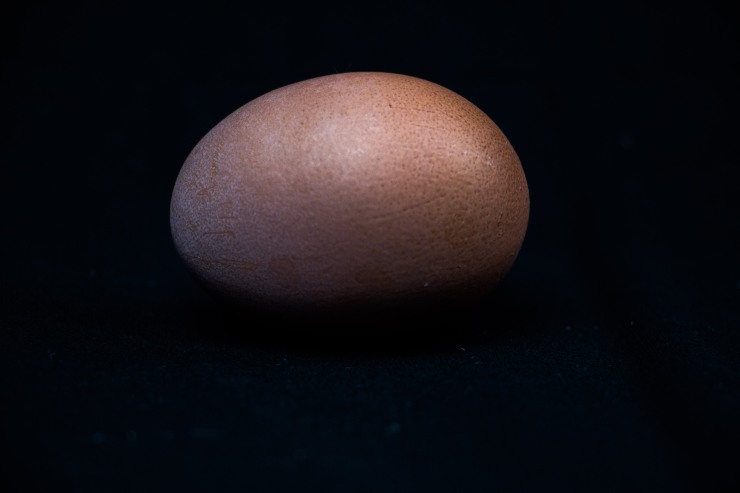
Image Two
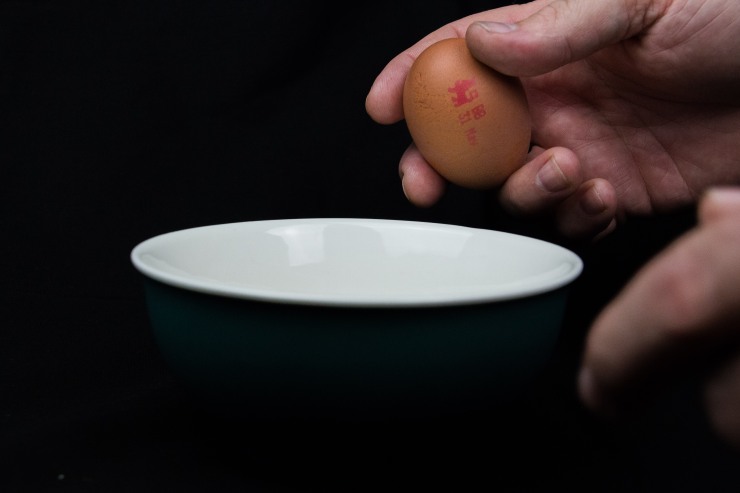
Image Three
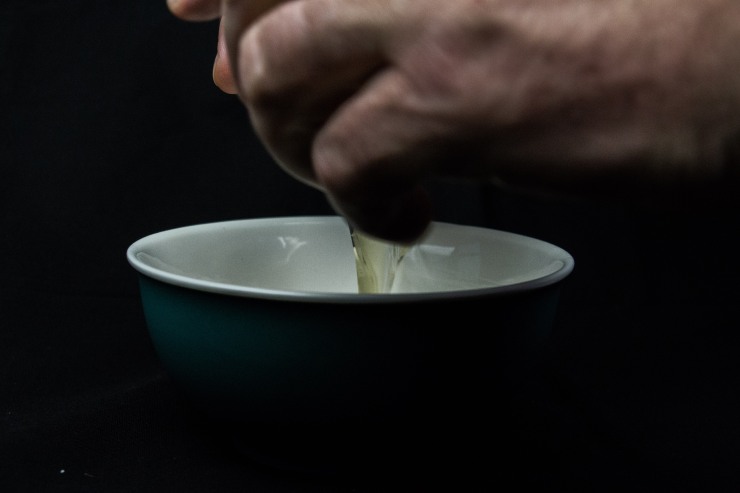
Image Four
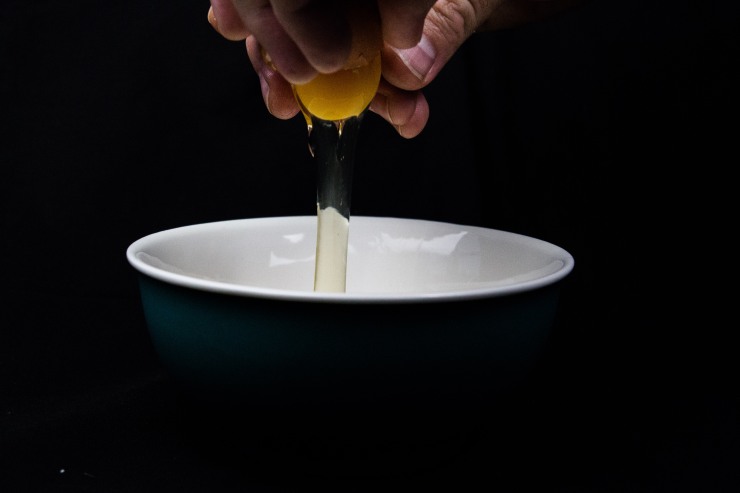
Image Five
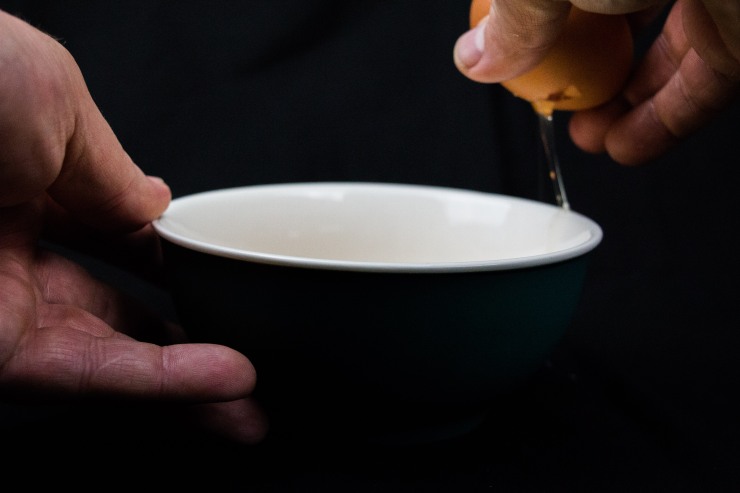
Image Six –
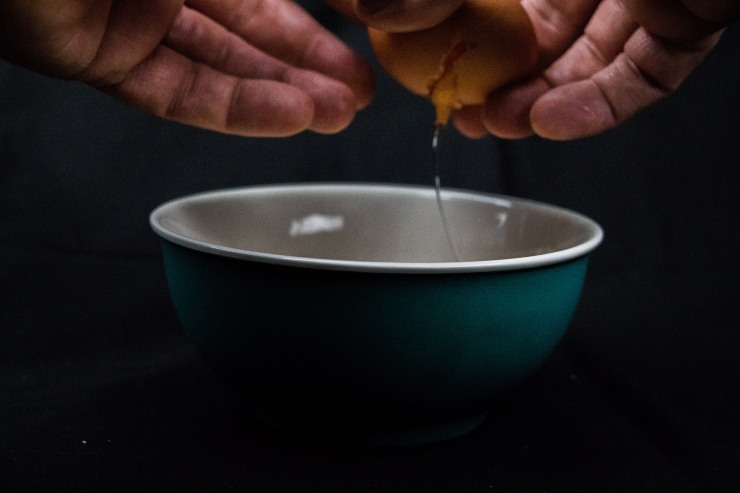
Image Seven

Image Eight
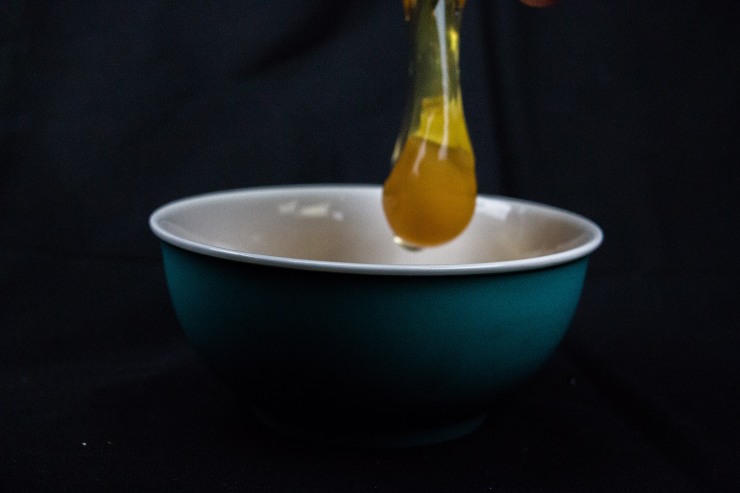
Image Nine
Overall the images are ok. I like that they are different to the Google images returned on the Search engine but they are far from how I envisioned them in my minds eye. I had to rely on editing in Lightroom to ensure the blacks were really black (and that irritating crease in my sheet wasn’t visible) and the adjust the clarity a little for extra detail. A number were out of focus as I hastily took each shot, in hindsight I should have set it to continuous or burst mode to ensure I had an easy quick succession of shots, I should have also used a faster shutter speed perhaps and I need to investigate why and how to overcome the glass reflection in Image One as I suggested above. Overall I liked that tried something new and Images Five and Nine were more of what I was hoping for.
This is definitely something I would like to revisit.
This exercise and the reading prior to it have made me think a great deal about my personal response to photography. I often think my challenge is not deciding what i want to do but rather, frustratingly, finding out how to do it. I wonder if that will change as the more technically astute I hope to become ?